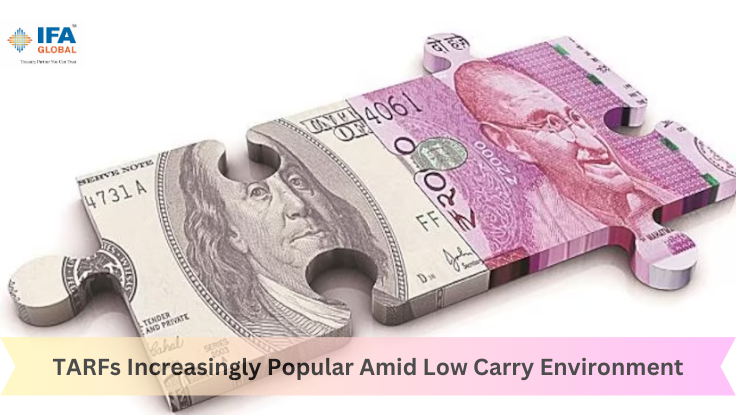21 Ways To Negotiate With Your Lender
20 June 2021 | By IFA Global

20 June, 2021
TYPES OF FACILITY
1) Nature of Facility typically bifurcated in Fund Based Limited and Non-Fund Based. Fund Based limits are limits, which will be available to the borrower in form of cash as and when required like Cash Credit, Overdraft etc. Whereas Non-Fund Based limits are limits, which will be issued in form of a Letter of Credit or Bank Guarantee to the persons with whom the borrower is dealing with like his suppliers, statutory authorities, etc. One should pay close attention to that appropriate mix of Fund Based and Non-Fund Based limits are granted to the borrower as per his need.
2) Fungibility or interoperability of Fund Based and Non-Fund Based limits – If any importer have high need for LC limits or any contractor/operator have sizable demand for Bank Guarantee, fungibility or interoperability of limits can solve his business’s problem. Fungibility of limits can be one-sided either from Fund Based to Non-Fund Based or vice versa or can be two-sided as complete fungibility between Fund Based and Non-Fund Based.
3) Working Capital Demand Loan is in place to tap cheap money in case of excess liquidity in the banking system. Further, short-tenured loans can be negotiated and availed at a cheaper rate as compared to running account loans i.e. Cash Credit or Overdraft facility.
Illustration – Low-Cost Funding opportunity: - WCDL vs. Cash Credit
4) Short Term foreign currency debts viz. PCFC (Packing Credit in Foreign Currency)/ PSCFC (Post Shipment Credit in Foreign Currency) should be in place to take advantage of Natural Hedge and low-cost forex debts in the case of exporters. These facilities can be granted as a sub-limit to the Cash Credit facility.
5) Export Packing Credit proves beneficial to the borrower if its business is in exports and eligible for any sort of interest subvention. A borrower can enjoy
arbitrage opportunities as compared to low-cost foreign currency debts.
Illustration: Interest rate arbitrage opportunity:
6) Forward Cover Limit or LER limit, if borrower is engaged in imports or in exports, he may need to hedge his foreign exchange flows from unwarranted volatility. Thus, he needs to have said limits under his belt. The borrower should pay attention that Forward cover limit/LER limit is commensurate to his adequate requirement.
PRICING
7) Know your Interest Rate for Fund Based facility. Interest rates should be explicit and not ambiguous. Some banks try to trick borrowers especially small businesses through not mentioning explicit rates and keep on changing rates. Therefore, while reviewing the sanction letter, one need to see this part carefully.
For example – Instances like interest rate mentioned as ‘at mutual discussion with the borrower’ or ‘at the discretion of the bank’ should be strictly avoided. Explicit pricing means either fixed rate or floating rate i.e., rates linked to any benchmark i.e., MCLR, LIBOR, EURIBOR etc.
8) Commission on Non-Fund Based Facility is the major cost for availing Non-Fund Based finance viz. Letter of Credit/Bank Guarantee etc. These commission should be written explicitly and not ambiguous.
For example - Reference of commission on LC/BG as 1% or any other explicit rate is always better and advisable as compared to instances like ‘at mutual discussion with the borrower’ or ‘at the discretion of the bank’ or ‘at card rates’.
9) Cash Margin is charged against Non-Fund Based Limits i.e. these are funds placed to banks against Non-Fund Based facilities. The borrower needs to check carefully that applicable cash margin is appropriate and in line with sanctions of other banks. In case of improvement in financial profile of borrower, he can ask the bank to reduce the said margins as the funds blocked with bank has their cost involved and further impair borrower’s cash flows.
10) Processing Fees should be adequate and not exaggerated. A borrower has to pay attention that renewal fees on loans should be less than the processing fees charged on initial grant of facility. As initial efforts made by banks for complete credit assessment results in higher processing fees, which should come down subsequently vis-à-vis efforts involved during renewal of proposals.
11) Prepayment Penalty should be appropriate and in line with general market practice i.e. in the range of 0.25%-1%.
SECURITY
12) Primary Security for borrowings should be in line with appropriate Asset Liability Management (ALM). Asset Liability Management means Short Term borrowings should be secured with Current Assets of the company whereas Long Term borrowings to be secured with the specific assets/projects for which it has been obtained.
For example – Short term borrowings viz. Cash Credit/Overdraft/PCFC/PSCFC/EPC should be secured against First Hypothecation charge on entire current assets of the borrower. For Long Term borrowings viz. Term Loan, Project Loans should be secured against First Hypothecation charge on entire movable Fixed Assets and First Equitable/ Registered Mortgage on entire immovable Fixed Assets of the borrower.
13) Sometimes banks secure Collateral Security despite having appropriate primary security. These securities are procured to gain additional comfort by banks however limit the availability of borrower to secure additional loans over these securities as these are already provided as collaterals. The borrower shall endeavor to negotiate the bank for release of collaterals, if its debts coverage is appropriate based on primary security offered and financial profile is sound.
Illustration: How to evaluate the need of collateral security
(A) Debt Coverage Ratio without Collaterals
Remarks: As the Debt Coverage is appropriate basis primary security, the borrower should negotiate for release of collaterals, if provided earlier or do not grant any collateral.
Remarks: As the Debt Coverage was insufficient without collateral, bank may ask for additional security. Therefore, the collateral security may be provided.
PURPOSE & TENURE
14) Short Term facility is granted for maximum of a year span whereas Term Loan or Project Loan is granted for more than 1 year period. One should closely review the stated purpose and maximum tenure granted.
Example 1 – Bank Guarantee limits were sanctioned only for fulfilling financial obligations; however, the borrower required a BG against fulfilling his performance obligations. Here, he cannot able to use his BG limit due to lack in sanction’s purpose.
Example 2 – Maximum tenure for Bank Guarantee sanctioned is for 2 years however, the requirement from the statutory authority is for 5 years. Here, the borrower cannot utilize his BG limit due to sanction for shorter tenure.
DRAWING POWER
15) Drawing Power is essential to determine the available drawings against sanctioned Fund Based Limits. Close attention needs to be paid to all inclusions and exclusions. Allowable cover period of debtors should be reviewed meticulously as the same should be in line with normal credit period granted to its customers.
Illustration: Calculation of Drawing Power
a) Details of Current Assets & Liabilities
b) Debtors ageing profile
c) Calculation of Drawing Power
Remarks: Shortage in available Drawing Power emanates from lesser cover period of debtors allowed by bank. Thus, a borrower may face liquidity crunch as the bank has not granted any credit against debtors lying in 120-180 days bracket.
16) Some organizations remain engaged in transactions with group companies or subsidiaries or associates due to regulatory or commercial needs. Therefore, receivables of group companies/subsidiaries/associates are to be allowed to be included subject to transactions carried out in ordinary course of business and at arm length price while calculating Drawing Power.
For example – A Ltd. sells its goods to B Ltd. (its sister concern) in USA, which in turn supplies goods to customers based in USA. In case of exclusion of B Ltd. as debtors, the borrower may not able to get against B Ltd. thus impair its ability to manage liquidity.
Illustration: Calculation of Drawing Power
Note 1: In the above illustration, Trade receivables includes receivables from group companies to the tune of Rs. 20 Crores. The bank has not allowed the same for calculation of Drawing Power
Note 2: All other information remains the same as above illustration
Remarks: Thus, further shortage in drawing power of Rs. 15 crores emanates from exclusion of receivables from group companies despite the transactions are in nature of genuine business transactions.
FINANCIAL COVENANTS
17) Financial Covenants to be linked with nature of facilities secured as Current Ratio & ISCR are usually best guard against Short Term Borrowings whereas DSCR & Debt Equity usually serve its purposes against Long Term Borrowings. Unnecessary financial covenants create hurdle for borrower; thus, they may approach banks for their removal or relaxation.
OTHER TERMS & CONDITIONS
18) Adequate time grant for perfection of security. Usually, sanction letter incorporates the term as security creation in 30 days time period. That itself is insufficient for creation of Mortgage due to various complexities involved like fetching Title Search Report from advocates, getting valuation done for various immovable properties located at different parts of the country etc.
19) Capital structure and management set-up are dynamic and can change based upon various reasons. A change is allowed in the same subject to prior approval of bank only in case of any material/significant changes.
20) In case of Multiple Banking Arrangement, lender usually stipulate to route sufficient cash flows through its operative account. The routing cash flows should be pro-rata in nature and cannot be stipulated in % by any particular lender.
Illustration: Pro-rata allocation of Cash Flows
Details of Banking Facilities Remarks – Thus, the cash flows should be routed in the working capital accounts based upon allocation above.
21) Banks ask for submission of financial results to review the financial performance of the borrower. However, an adequate time should be granted for submission of detailed audited financials and Quarterly financials. Let’s say - audited financials and quarterly financials can be submitted within 180 days and 60 days respectively.
THE MODERN BANKING SYSTEM MANUFACTURERS MONEY OUT OF NOTHING – JOSIAH STAMPS
The famous economist, industrialist, writer & banker Mr. Stamps once quoted this famous quote. Therefore, scan your sanction letter wisely and negotiate terms and conditions diligently with banks and don’t get victimized to the modern banking system and save your hard-earned money.




